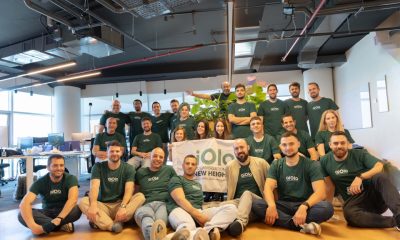Thought Leaders
Inside Synthetic Voice: Building, Scaling, and Safeguarding Machine Speech

We’re surrounded by machines that talk to us, and we’re talking back more than ever. Synthetic voices have moved beyond novelty into everyday tools: podcast narration, virtual coaching apps, and car navigation systems. Some sound surprisingly natural and engaging, others still make you cringe.
Voice carries emotion, builds trust, and makes you feel understood. As conversations with machines become routine, the quality of those voices will determine whether we see them as helpful partners or just another piece of frustrating technology.
What Makes a Good Machine Voice?
Building effective synthetic voices requires more than just clear pronunciation. The foundation starts with clarity. As in, voices must work in real-world conditions, cutting through noise, handling diverse accents, and staying intelligible whether someone’s navigating traffic or working through a complicated process. This context drives tone selection, with healthcare assistants needing calm professionalism, fitness apps requiring energetic delivery, and support bots working best with neutral consistency.
Advanced systems demonstrate adaptability by adjusting on the fly, not just switching languages, but reading conversational cues like urgency or frustration and responding appropriately without breaking flow. Empathy emerges through subtle elements like natural pacing, proper emphasis, and vocal variation that signal genuine engagement rather than script recitation.
When these components work together effectively, synthetic voices transform from basic output mechanisms into genuinely useful communication tools that users can rely on rather than navigate around.
The Core Pipeline: Turning Words into Voice
Modern text-to-speech systems operate through a multi-stage processing pipeline, built on decades of speech research and production optimization. Converting raw text into natural-sounding audio requires sophisticated engineering at each step.
The process follows a clear sequence:
Stage 1 – Text Analysis: Preprocessing for Synthesis
Before any audio generation begins, the system must interpret and structure the input text. This preprocessing stage determines synthesis quality. Errors here can cascade through the entire pipeline.
Key processes include:
Normalization: Contextual interpretation of ambiguous elements like numbers, abbreviations, and symbols. Machine learning models or rule-based systems determine whether “3/4” represents a fraction or date based on surrounding context.
Linguistic Analysis: Syntactic parsing identifies grammatical structures, word boundaries, and stress patterns. Disambiguation algorithms handle homographs, like, distinguishing “lead” (metal) from “lead” (verb) based on part-of-speech tagging.
Phonetic Transcription: Grapheme-to-phoneme (G2P) models convert text to phonemic representations, which are the acoustic building blocks of speech. These models incorporate contextual rules and can be domain-specific or accent-adapted.
Prosody Prediction: Neural networks predict suprasegmental features including stress placement, pitch contours, and timing patterns. This stage determines natural rhythm and intonation, differentiating statements from questions and adding appropriate emphasis.
Effective preprocessing ensures downstream synthesis models have structured, unambiguous input – the foundation for producing intelligible and natural-sounding speech.
Stage 2 – Acoustic Modeling: Generating Audio Representations
Acoustic modeling converts linguistic features into audio representations, typically mel-spectrograms that encode frequency content over time. Different architectural approaches have emerged, each with distinct trade-offs:
Tacotron 2 (2017): Pioneered end-to-end neural synthesis using sequence-to-sequence architecture with attention mechanisms. Produces high-quality, expressive speech by learning prosody implicitly from data. However, autoregressive generation creates sequential dependencies – slow inference and potential attention failures during long sequences.
FastSpeech 2 (2021): Addresses Tacotron’s limitations through fully parallel generation. Replaces attention with explicit duration prediction for stable, fast inference. Maintains expressiveness by directly predicting pitch and energy contours. Optimized for production environments requiring low-latency synthesis.
VITS (2021): End-to-end architecture combining variational autoencoders, generative adversarial networks, and normalizing flows. Generates waveforms directly without requiring pre-aligned training data. Models the one-to-many mapping between text and speech, enabling diverse prosodic realizations. Computationally intensive but highly expressive.
F5-TTS (2024): Diffusion-based model using flow-matching objectives and speech infilling techniques. Eliminates traditional components like text encoders and duration predictors. Demonstrates strong zero-shot capabilities, including voice cloning and multilingual synthesis. Trained on 100,000+ hours of speech data for robust generalization.
Each architecture outputs mel-spectrograms – time-frequency representations that capture the acoustic characteristics of the target voice before final waveform generation.
Stage 3 – Vocoding: Waveform Generation
The final stage converts mel-spectrograms into audio waveforms through neural vocoding. This process determines the final acoustic quality and computational efficiency of the system.
Key vocoding architectures include:
WaveNet (2016): First neural vocoder achieving near-human audio quality through autoregressive sampling. Generates high-fidelity output but requires sequential processing – one sample at a time – making real-time synthesis computationally prohibitive.
HiFi-GAN (2020): Generative adversarial network optimized for real-time synthesis. Uses multi-scale discriminators to maintain quality across different temporal resolutions. Balances fidelity with efficiency, making it suitable for production deployment.
Parallel WaveGAN (2020): Parallelized variant combining WaveNet’s architectural principles with non-autoregressive generation. Compact model design enables deployment on resource-constrained devices while maintaining reasonable quality.
Modern TTS systems adopt different integration strategies. End-to-end models like VITS and F5-TTS incorporate vocoding directly within their architecture. Modular systems like Orpheus generate intermediate spectrograms and rely on separate vocoders for final audio synthesis. This separation enables independent optimization of acoustic modeling and waveform generation components.
Pipeline Integration and Evolution
The complete TTS pipeline, text preprocessing, acoustic modeling, and vocoding, represents the convergence of linguistic processing, signal processing, and machine learning. Early systems produced mechanical, robotic output. Current architectures generate speech with natural prosody, emotional expression, and speaker-specific characteristics.
System architecture varies between end-to-end models that jointly optimize all components and modular designs that allow independent component optimization.
Current Challenges
Despite significant advances, several technical challenges remain:
Emotional Nuance: Current models handle basic emotional states but struggle with subtle expressions like sarcasm, uncertainty, or conversational subtext.
Long-Form Consistency: Model performance often degrades over extended sequences, losing prosodic consistency and expressiveness. This limits applications in education, audiobooks, and extended conversational agents.
Multilingual Quality: Synthesis quality drops significantly for low-resource languages and regional accents, creating barriers to equitable access across diverse linguistic communities.
Computational Efficiency: Edge deployment requires models that maintain quality while operating under strict latency and memory constraints – essential for offline or resource-limited environments.
Authentication and Security: As synthetic speech quality improves, robust detection mechanisms and audio watermarking become necessary to prevent misuse and maintain trust in authentic communications
Ethics and Responsibility: The Human Stakes
With this technology advancing rapidly, we also need to consider the ethical implications that come with increasingly realistic synthetic voices. Voice carries identity, emotion, and social cues, which makes it uniquely powerful and uniquely vulnerable to misuse. This is where technical design must meet human responsibility.
Consent and ownership remain fundamental questions. Whose voice is it, really? For example, look at the case between Scarlett Johansson and OpenAI – whether sourced from actors, volunteers, or public recordings, cloning a voice without informed consent crosses ethical boundaries, even if legally defensible. Transparency must extend beyond fine print to meaningful disclosure and ongoing control over voice usage. Deepfakes and manipulation present immediate risks, as realistic voices can persuade, impersonate, or deceive through fake emergency calls, spoofed executive commands, or fraudulent customer service interactions. Detectable watermarking, usage controls, and verification systems are becoming essential safeguards rather than optional features.
At its core, ethical TTS development requires designing systems that reflect care alongside capability – considering not just how they sound, but who they serve and how they’re deployed in real-world contexts.
Voice Will Be the Next Interface: Into the Future
Everything covered so far, the improvements in clarity, expressiveness, multilingual support, and edge deployment, is leading us toward a bigger shift: voice becoming the main way we interact with technology.
In the future, talking with machines will be the default interface. Voice systems will adjust based on context, like being calmer in emergencies, more casual when appropriate, and will learn to pick up on things like frustration or confusion in real time. They’ll keep the same vocal identity across languages and run securely on local devices, making interactions feel more personal and private.
Importantly, voice will expand accessibility for the hearing-impaired through dynamic speech shaping, compressed rates, and visual cues that reflect emotion and tone, not just text.
These are just a few of the breakthroughs ahead.
Final Thoughts: Connecting, Not Just Speaking
We’re entering an era where machines don’t just process language, they participate in it. Voice is becoming a medium for guidance, collaboration, and care, but with that shift comes responsibility.
Trust isn’t a feature you can toggle; it’s built through clarity, consistency, and transparency. Whether supporting a nurse in crisis or guiding a technician through critical tasks, synthetic voices are stepping into moments that matter.
The future of voice isn’t about sounding human. It’s about earning human trust – one word, one interaction, one decision at a time.












